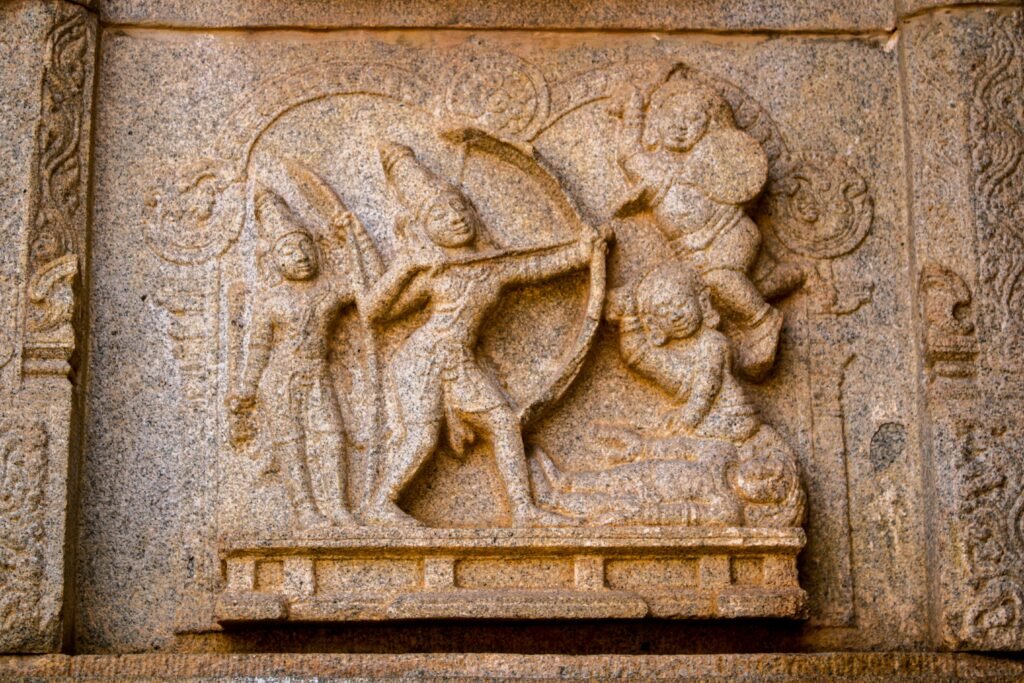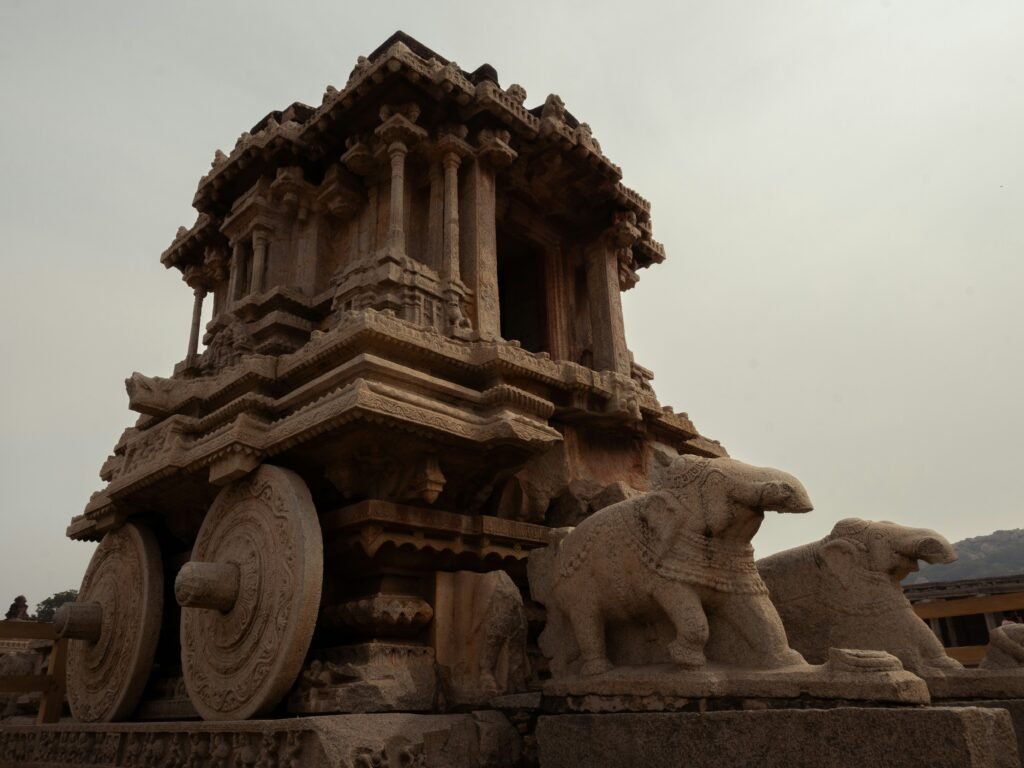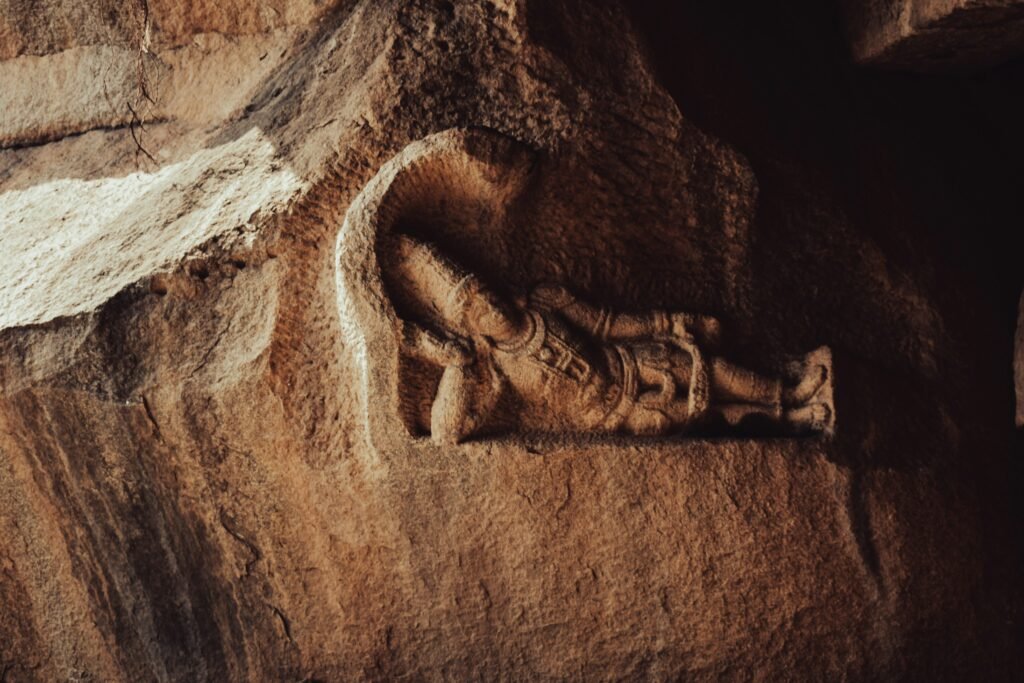Historical Significance of Hampi Temples
Hampi, a UNESCO World Heritage Site, once thrived as the capital of the Vijayanagara Empire. This empire flourished from the 14th to the 17th century. The temples in Hampi showcase not only architectural brilliance but also the socio-political and cultural advancements of that time.
During its peak, Hampi became a hub for trade, arts, and religion. The detailed temple architecture and rich iconography reflect this. Virupaksha Temple and Vithala Temple are two standout structures. They display a mix of influences from the Deccan Sultanates, the Chalukyas, and even North Indian styles.
The Vijayanagara rulers actively supported art and religion. Many temples were built under their reign, drawing religious practitioners from across India. These temples became important centers for religious and community life. Festivals and gatherings at the temples strengthened social bonds.
Hampi’s temples also illustrate a blend of Hindu, Islamic, and Jain influences. This is seen in the sculptures and carvings, which depict deities and mythological stories. These artistic details served both religious and educational purposes.
Exploring Hampi’s temples offers insight into the complex religious and social life of the Vijayanagara period. These temples remain crucial to understanding India’s rich cultural heritage.
Architectural Marvels: The Design and Structure of Hampi Temples




Hampi’s temples are famous for their stunning architecture, combining artistry with engineering. The intricate carvings on many structures stand out. These carvings depict mythological scenes, floral designs, and animals, showcasing the craftsmanship of Vijayanagara artisans. Each temple reflects the rich cultural heritage of the 14th to 16th centuries.
A key feature of these temples is the gopurams, the towering gateway towers adorned with detailed sculptures. These structures serve as grand entrances and elevate the spiritual atmosphere. The Virupaksha Temple is a prime example. Its massive gopuram symbolizes Hampi’s grandeur, inviting visitors to explore its beauty.
The use of monolithic rocks also highlights the architectural skill. The Vittala Temple’s stone chariot, carved from a single rock, is a masterpiece. This temple is also known for its musical pillars, which produce musical notes when struck, blending art with function.
Common features in Hampi’s temples include mandapas, or pillared halls, which provide spaces for gatherings and rituals. Sanctums house the deities and are designed to inspire devotion. Water tanks, vital for rituals and daily needs, reflect advanced water management skills in ancient times.
In summary, Hampi’s architectural marvels, with their intricate carvings, towering gopurams, and creative use of stone, celebrate the Vijayanagara Empire’s legacy. These temples continue to awe visitors with their timeless beauty and historical significance.
Cultural and Spiritual Relevance of Hampi Temples




Hampi’s temples, a UNESCO World Heritage Site, showcase India’s rich spiritual and cultural heritage. These grand structures highlight the architectural genius of the Vijayanagara Empire and serve as active centers of worship and community life. With intricate carvings and rich iconography, each temple fosters a deep spiritual connection among visitors and devotees.
Rituals and festivals play a central role in these temples. The Virupaksha and Vittala temples attract pilgrims for daily pujas, festivals, and religious gatherings throughout the year. The annual Car Festival at the Vittala Temple draws thousands, creating a joyful and devotional atmosphere. These events highlight the temples’ importance as cultural and religious hubs.
Hampi’s temples are also significant pilgrimage sites that draw visitors from around the world. Many come not just to admire the architecture but also to experience the temples’ spiritual ambiance. The serene environment and stories of the deities offer a unique space for reflection and prayer. These visitors often contribute to a rich cultural exchange, deepening Hampi’s religious significance.
The art within Hampi’s temples reveals a history where religion and art blend seamlessly. Detailed sculptures and paintings reflect the artistic mastery of the past while carrying deep symbolic meanings tied to local traditions. This union of spirituality and artistry turns Hampi into a living museum, preserving traditions that continue to inspire awe.
In summary, the temples of Hampi are essential cultural and spiritual landmarks. They connect the past and present, preserving an extraordinary legacy that continues to inspire devotion and admiration.
Preservation Efforts and Challenges Faced by Hampi Temples
The temples of Hampi, a UNESCO World Heritage Site, showcase the Vijayanagara Empire’s architectural brilliance. However, preserving these ancient monuments faces many challenges. Environmental degradation, tourism impact, and structural wear threaten the temples’ integrity.
Both governmental and non-governmental organizations work hard to protect these historic sites. The Archaeological Survey of India (ASI) leads restoration efforts, using conservation techniques to prolong the temples’ lifespan. Collaborating with local authorities and international groups, ASI addresses damage from erosion, pollution, and heavy tourist traffic. To balance conservation and community needs, initiatives now regulate visitor numbers and promote responsible tourism.
Non-governmental organizations (NGOs) also play a key role. They raise awareness among locals and tourists about the importance of preserving Hampi’s cultural heritage. Through educational programs and community projects, NGOs encourage people to take an active role in conservation.
Despite these efforts, challenges persist. Climate change continues to threaten the temples’ structural stability. Unregulated tourism causes wear and tear, and overcrowding diminishes the visitor experience. These issues highlight the urgent need for sustainable tourism practices that prioritize heritage preservation.
In summary, preserving Hampi’s temples requires a united approach. Authorities, communities, and visitors must all contribute to safeguarding this historic site. By working together, we can ensure Hampi’s temples remain a cultural treasure for future generations.






